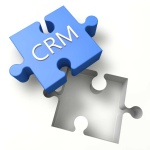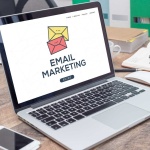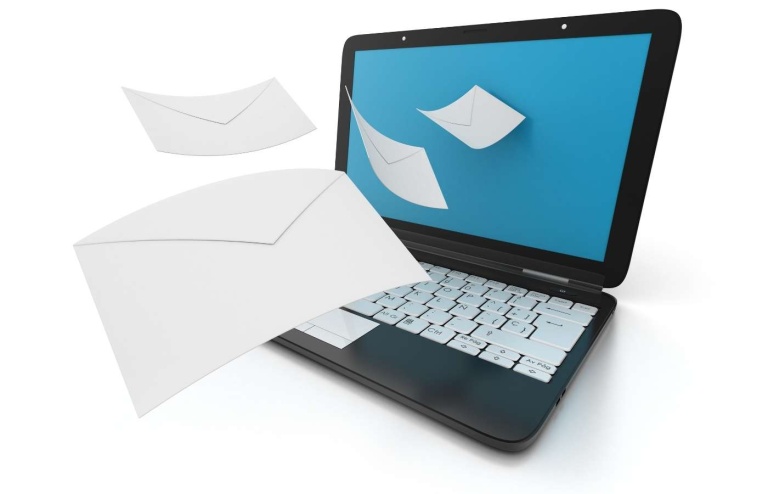Cold emailing can be tricky. In fact, there are many times people give up before they even start. However, if you approach it properly, you can get some amazing results. But, the key is knowing how to finely craft the approach and avoid the spam bin and other pitfalls.
When crafting an effective cold email, you must ask yourself some questions. Does the initial line capture the reader’s attention? Have you made your product pitch appealing and sexy? Is the introductory paragraph specific enough? Did you consider all the technicalities around your domain email to avoid hitting the spam bin? The final goal of doing all of these is to get your cold email delivered, opened, read, and, most importantly, responded to.
Cold emails, on the other hand, might be a goldmine for brand new customers. However, they might be an embarrassing flop of a disaster, a waste of time and resources. The trick is to take into account all aspects and approach it with more of a plan rather than just throwing some words on a screen and hitting send. Before you start, it is important that you take the time, don’t rush!! A cold email list is something that you’ll need to warm up, and with each try, you are getting dangerously closer to the black list if not done properly. You may think that you can try again and again, but sending hundreds of emails per day and receiving no responses always leads to the same place — the Blacklist. The blacklist is something that every business doing email campaigns wants to avoid.
Some Things to Keep in Mind When Cold Emailing
Instead  of a firm, the communication should come from a specific salesperson. Cold emails are all about creating human relationships with prospects, and the first chance for a salesperson to do so is in the “from” line.
of a firm, the communication should come from a specific salesperson. Cold emails are all about creating human relationships with prospects, and the first chance for a salesperson to do so is in the “from” line.
The subject line of the email must be eye-catching. Subject lines are your best opportunity of enticing someone to even open your email, let alone respond to it, so give them considerable consideration. At the very least, keep your subject line short and include anything that will catch the prospect’s attention, such as their name or the name of their company. (Personalized subject lines in emails are 26% more likely to get opened!)
You should add a concise body copy on the inside of the email—basically your elevator pitch. Nobody has time to read a book. This copy should incorporate all of your research and explain why you want to work with this specific person. You should truly feel that your service will benefit them and understand why at the end of the day. Being able to express it in a cold email will help you appear more trustworthy to your prospect. Remember, this doesn’t have to be in one email. You can create a series of emails. More on that later!
You can develop trust with your prospect by listing any large clientele you have. But don’t boast; instead, tell your prospect that you and the
company you work for is both legitimate.
Make sure your email contains a clear call to action (CTA). Tell your prospect exactly what action you want them to take next, and make it as simple as possible. Do you want them to complete a form? Give them a direct link to that form. Or, even better, integrate the form directly into your email. Again, we will talk about this in further detail later as well. There are many dos and don’ts when it comes to CTAs.
Finally, keep in mind that having only one CTA is part of having a clear CTA. The advantage of using only one CTA is that it allows you to keep your email concise and to the point.
How Can You Persuade Someone In A Cold Email?
 It all boils down to having a solid understanding of your buyer personas. Consider their pain point, the solutions they may have attempted without success, or their aspirations. The more you can delve into ‘what’ they might be looking for and position your email to deliver value, the more likely they will open and engage with the material.
It all boils down to having a solid understanding of your buyer personas. Consider their pain point, the solutions they may have attempted without success, or their aspirations. The more you can delve into ‘what’ they might be looking for and position your email to deliver value, the more likely they will open and engage with the material.
Some information that you might offer as initiatives, for example, would be to send a link to a blog post, links to specific current podcasts, and free downloads. In this approach, the goal is to provide potential customers with something of value that will help them recognize that you are a reputable source they can rely on (and that can solve their problem).
Remember that there is a significant difference between cold and warm emails. When your prospect is a warm lead, you can take a different approach to the email interaction. When it comes to cold emails, you must focus on addressing their most immediate objections, which are: “Who is this salesperson emailing me?” and “Why should I pay attention?”
The more you can win their trust by giving value to your cold emails, the faster you can convince them to want to set a sales call with you.
Choose Your Prospects Wisely
Knowing your prospects is the first step in creating cold emails that result in responses. Do your homework to verify that the services or the products you offer will be beneficial to them. Don’t just dig up a bunch of emails and blast away. This takes some time and understanding, not to mention practice!
It’s pointless, for example, to promote SEO software to a person that doesn’t even know what SEO is. Or promote things about working from home and freelancing to a person that is a 9-to-5er. What should you do? Filter your entire mailing list and target audience until you feel as if you know them intimately. Find out as much about your prospects as possible by searching around online.
Prospects should not be chosen at random. You should be familiar with your prospects’ jobs, interests, positions in the firm you want to collaborate with, etc. This will improve your chances of receiving responses to cold emails.
Their interests are important as this can be a way that you can relate. Maybe you will eventually go golfing with them. Of course, this is far down the line of prospecting. But knowing your audience is important at all stages of prospecting new opportunities.
Maintain Short and Individualized Subject Lines
A subject line that is more than 45 characters long may not appear completely in your recipient’s inbox. Keep this in mind when you are coming up with a catchy subject line to grab their attention. If they cannot read it, you have failed at this step.
Studies have shown that the sweet spot is between 4 and 15 characters, which results in a 15.2% average open rate. With a 12.2% open rate, 28 to 39 characters appear to be a decent option as well. In fact, very short subject lines had the highest open rates. With subject lines that are only a few words long, you must go straight to the point and find a method to pique someone’s interest (who doesn’t know you) enough to open and read your email.
Include the prospect’s first name in the subject line whenever possible. When an email is addressed to them, people are more inclined to open it or respond to it.
Keep in mind that around 40% of emails are opened on mobile devices, where screen space is much more limited. So, don’t jam too many words into your subject line because it will impair its legibility on a tiny mobile screen.
Begin Your Cold Email With Their Name
Using sales or marketing templates might help you save time. However, their goal is to make your job easier, not to do it for you.
Always tailor your sales email templates such that the opening few phrases showcase the information you know about your prospects and their present issues.
Your recipient will almost certainly be a person. And, like all humans, they are passionate about…* drum roll *… themselves!
The goal is to make the personalization feel as if you’re talking to old friends. Try to work on not being fake or robot-like, which is something newbies tend to do in this space.
It’s important to personalize the email opener as much as possible by mentioning the prospect’s first name.
More particular, when it is formatted as follows, the response rate increases: Hey NAME: – avoiding more formal salutations like “Dear” or “Hi,” and instead beginning your email with a more conversational or pleasant tone, followed directly by their first name (not Mrs. Mr., Miss,), and finishing with a colon (not a comma or a dash).
This may appear to be an unusual way to begin a cold outreach email, but it works!
Keep Your Emails Brief
Because you’re a new name in your potential customers’ inbox, they’re likely to be wary of even opening the cold email. Remember that your prospect or modern buyer is both unfamiliar with you and busy – two factors that will work against you in getting them to open and read whatever cold email or campaign you send.
Don’t waste your time with a foot-long page of content or an email that takes more than 45 seconds to read. Limit your emails to around 100 words. You’ll have plenty of time to discuss specifics afterward. For the time being, it’s all about capturing your prospect’s interest, arousing their curiosity, and earning their trust. Use these words wisely to turn this cold lead into a warm one.
Keep in mind that email is only a digitalized extension of a discussion. Consider what you do when you first meet someone in person. You’d probably introduce yourself, then they’d ask what you do, and you wouldn’t (ideally) spend 8 minutes telling them about yourself. Right? This is the method you want to take with a cold outreach email or something quite similar.
Nobody loves a long-winded conversationalist, and neither do your prospects!
Always lead with intrigued and great value – all while spending no more than a few seconds doing so.
If you don’t already read your emails aloud and time yourself, this is an excellent habit to adopt to ensure that your sales emails aren’t difficult to read, dull, excessively long, or otherwise likely to end up in the trash folder.
Bonus: Utilize Your Storytelling Talents
Storytelling is a fantastic approach for enthralling, involving, and persuading readers in any situation. Establishing a connection with the recipient through cold email outreach will add value and quality to the message being given. There is little doubt that readers are sick of pushy and repetitious sales tactics by this point.
Storytelling is an effective strategy because it boosts user engagement, conversions, brand value, and most importantly, brand reputation. Using storytelling in your email campaigns also helps you stand out from the crowd by establishing an empathetic bond with your audience.
To create a captivating plot, you must first understand your prospects’ wants and preferences. Creating a buyer persona can help you decide which elements to include in your tale. Your story’s content must add value by being useful and relevant to their business. Try to keep it as simple and convincing as possible. Remember the 100-word rule. Going overboard with your imaginative abilities may be excessive.
Try to portray your company’s ideals through the story you’re presenting. Alternatively, you might design a storyline that addresses your prospects’ pain areas and will resonate with them. To summarize, it is critical to remember that your primary goal is to develop a captivating story for your audience that will encourage conversions.
While storytelling is great for some niches, it doesn’t always work for everything. Being creative, however, does. Start your creative juices flowing when it comes to how you’ll connect.
Taking Advantage of Visuals
Emails in plain text are a snooze fest! There are numerous email marketing solutions available that allow you to create visually appealing layouts for your information. Furthermore, because the human brain absorbs visual information far faster than text, visuals are significantly more effective than simple text.
Using visuals also allows you to deliver your information more effectively and minimizes the possibility of misinterpretation. The photos should be topical and relevant to the message you want to convey. Instead of using stock photos, hiring a graphic designer will make your design more aesthetically appealing.
Other visual elements can be used in addition to photos. Customer testimonials, product shots, behind-the-scenes photos, infographics, and illustrations are examples. Consider choosing colors that are consistent with your brand when developing the perfect visual email. Another great suggestion is to run A/B tests to see what works best for your company. We’ll get into the testing of the emails later.
The text-to-image ratio should not be lopsided. Visuals should be used largely to illustrate the text and should not take center stage. This balance is helped by the 80 (text) by 20 (visuals) rule. Try to stick as closely to that rule as possible.
A Little Compliment Can Go A Long Way
You may have heard that flattering someone you’re wanting to reach out to is a poor idea. After all, if they think you’re just complimenting them to get something out of them, they won’t give you a second consideration. The trick, though, is an adage: “Everything in proportion.”
A bit of flattery can go a long way. You’ll nail your initial impression and develop a positive perception of yourself in the recipient’s mind if you do it correctly. Overdo it, and that email will be deleted in an instant.
Here are some instances of things not to do:
“Your company has impressed me in a variety of ways!”
“I discovered your cat site, and it’s the most AMAZING pet care blog I’ve ever read in my life!”
“I’ve heard a lot about you and would be thrilled to receive a response from someone as outstanding as yourself!”
Do you see what’s wrong with these? They are simply overly optimistic and wishy-washy. Furthermore, you should do your best to avoid using all caps in cold emails. In one of the examples, you sound like you are beneath them. Why should the recipient respond to someone so insignificant? Yet the other example fails to explain anything special. It appears to have been copied and pasted from another email, which is never helpful.
Be authentic when you are trying to give a compliment whenever possible.
So, what is the most important thing to remember while writing winning cold emails?
 Get to the point fast and invite people to interact with you (aka drive them to your social media profile, for example). This allows them to get to know you or your business better before you start pitching your product or service. You can send them to your own personal page where you talk about yourself and what you do or send them to your business page. Either way, you need to provide them with a link that they can go to and explore further should they feel comfortable doing so and want to. This will allow them to do their own “research” into who you are, what you have to offer, and what you are promoting in-depth. Remember, keep it short and simple! Don’t lose them in a wall of words or rambling.
Get to the point fast and invite people to interact with you (aka drive them to your social media profile, for example). This allows them to get to know you or your business better before you start pitching your product or service. You can send them to your own personal page where you talk about yourself and what you do or send them to your business page. Either way, you need to provide them with a link that they can go to and explore further should they feel comfortable doing so and want to. This will allow them to do their own “research” into who you are, what you have to offer, and what you are promoting in-depth. Remember, keep it short and simple! Don’t lose them in a wall of words or rambling.
Briefly Explain Why You’re Contacting Them.
Every week, your prospect is likely to get dozens, if not hundreds, of cold emails. So, what distinguishes yours from the ones they’ve already deleted?
This is why you must clearly state what is in it for them to open and then continue reading your email and why they should care.
Including WHO you are and WHAT you do isn’t generally enough to entice someone into a digital conversion; you also need to explain WHY you’re reaching out to them particularly.
It won’t take you long to write two sentences explaining what you have for them and how it can benefit them, why you’re contacting them, or what they can gain from taking time out of their busy day to read your email.
It goes a long way when you can spell out why you’re reaching out and incorporate personal messaging about them throughout the email. It demonstrates to your prospect that you took the time and effort to learn about them before reaching out. Try to personalize it a little, the best you can.
Make A Strong Call To Action.
Every cold email should aim to persuade the recipient to take the next step in the sales process. So everything you write in the email must be focused on that single goal.
Only ask for one action: don’t ask them to download a piece of content that you wrote or an eBook. Complete your survey and join you on a call. Focus!
If it is too early or inappropriate to request a meeting, instead invite them to an event (live event or webinar). Solicit their opinion by asking simple questions to which they can respond, or you can include a call to action that directs the buyer to a helpful resource (e.g., downloadable eBook or video), or ask a question to validate their business pain (s). But, only one per email.
If you truly believe that your solution will be beneficial to your prospect, make the request and provide three 30-minute time slots, two, three, and four weeks in advance. Two weeks in advance, supply an 8 a.m. window, three weeks = 3 p.m., and four weeks = 5 p.m. Then, when they react and select a time slot, record in your CRM how far ahead their schedule may be scheduled AND what time they wish to meet!
What is CRM?
 When working with cold email campaigns or any type of marketing campaign, you’ll need a way to keep yourself organized. That’s what CRM is for.
When working with cold email campaigns or any type of marketing campaign, you’ll need a way to keep yourself organized. That’s what CRM is for.
Customer Relationship Management (CRM) is a technology that manages all of your company’s relationships and interactions with potential customers and current customers. The idea is straightforward: Improve business ties to build your company. A CRM system allows businesses to stay connected to their consumers, increase revenue and reduce procedures.
When people talk about CRM, they usually mean a CRM system, which is a tool that helps with agent productivity, sales management, contact management, and other tasks. CRM technologies can now be used to manage customer connections across the whole customer lifecycle, including marketing, customer service interactions, digital commerce, and sales.
A CRM solution allows you to focus on your organization’s relationships with individual people — such as suppliers, colleagues, service users, or customers — throughout their lifecycle, including prospecting new customers, winning their business, and providing additional services and support throughout the relationship. This is why it is so important before you start your email marketing campaign that you have a CRM in mind. This will help you stay organized.
Maintain Your Prospect’s Interest
The average attention span for reading an email is 11 seconds. And 43% of readers will stop reading after the first 8 seconds. This means that you don’t have a lot of time to grab their attention. If you have ever opened emails or junk mail from your mailbox, you should know that you don’t give it much attention, if any at all. That’s why, as a marketer, you need to have something catchy that will grab them in and make them want to read more.
While we all might know that we have short attention spans, many salespeople continue to send emails in which they introduce themselves and their company—which the prospect has never heard of and is uninterested in—along with a sales pitch. That’s between 5 and 6 seconds. Wasted.
Because your target doesn’t know you—and, again, doesn’t care—you must begin by catching and holding their attention: mention information they published or say something they did, or address their concerns right away. Perhaps you heard they were at an event? Make mention of it! (Only once, don’t be creepy!)
Remember that each sentence you write should force readers to read the next one, and then the next one, and so on.
Finish a Cold Email With an Enticing Close
In the same way that the opener of your emails should be conversational, research reveals that there are successful ways to conclude your cold emails as well.
Remember that you want to keep your emails friendly and less formal, so you should not end your emails with “Sincerely” when doing cold email marketing. Instead, end it with something such as “Best” and sign your name. This is more in line with what you would send to a friend or colleague.
Another point to consider is the success of using P.S. lines at the end of a sales email. The P.S. naturally catches the prospect’s attention and can be an excellent area to add further content to the email or include a clear CTA for your prospect to follow.
However, don’t cram too much into your P.S. If you do use it, try to keep the P.S. to no more than two lines at the end of your cold email.
What Should You Leave Out of a Captivating Cold Email?
Keep in mind that when you send out cold emails, you are essentially letting your prospects know that you are available, who you are, what you can do for them (most important), and the CTA (Call to Action) should be short and simple. You may wish to add “purchase now” urgency later in the email sequence.
The best method, though, is to always provide value. When it comes to cold outreach, as previously stated, the most successful cold emails are short and jam-packed with valuable content. You want to help alleviate a pain point for that potential client or provide them with a technique that helps them succeed with their goals. You might even give them a technique that they can implement. Or, at the very least, provide them with a bit of vital information.
The idea is to utilize your email to initiate a sales conversation with your prospect by offering a lot of value and building rapport – not to lead with a “you must buy” tone.
If everything else fails, think about what you would like to read or be sent if you were a potential customer. Putting yourself in your prospect’s shoes might help you discover the best way to send a very captivating cold email.
Make Several Attempts
Why don’t the majority of your cold email recipients respond? They’re quite busy. How can you provide enough information to pique people’s attention and motivate them to act? How can you make things brief while still getting results? You send several emails over time. It is common to receive a positive response from a chilly prospect after 7 to 10 touches. So, why do we anticipate a response from a single email? You can send 3, 5, or more emails in one campaign as long as you don’t send the same message over and over (and provide a method to opt out of the campaign).
So plan out your campaign, giving each email in your campaign a distinct purpose. As an example: Email No. 1: Offer Email 2: The offer is urgent. Email 3: A unique but similar offer. Email 4: Inquire whether they have any questions. Email 5: Share your success story and ask for a demo. There’s no need to cram too much information into a single email with this method. Because each email in the series serves a defined goal, it can remain focused and brief.
When Responding, Be courteous
Receiving responses to your emails is exciting until you lose interest in responding to them. If you receive a response from a prospect, you must be extra diligent in producing a good, warm, courteous, personalized reply message to avoid losing the business. Rushing into responses to prospects is not a wise strategy. Instead, take your time responding and allow the prospect ample time to assimilate the conversation naturally. Remember that you are conversing with a human being. This isn’t like a social media post or a blog article that you can put out there and then forget about. You are aiming to initiate a discussion when you send your first email. So, when they answer, do your best to sympathize, relate to them, and address the issue that brought them to you.
The Importance of Email Spam Checkers
 We can’t seem to get away from email spam. Email spam is inconvenient for the recipient since it not only wastes time removing rubbish but also has the potential to install malware on your computer with the click of a link.
We can’t seem to get away from email spam. Email spam is inconvenient for the recipient since it not only wastes time removing rubbish but also has the potential to install malware on your computer with the click of a link.
The presence of email spam makes it more difficult for legitimate emails to reach their intended recipients, which can wreak havoc on any email marketing program by causing deliverability concerns. An email spam checker is an essential tool for a business sending a significant volume of messages as part of an email marketing campaign to improve email deliverability, boost IP reputation, and ultimately keep your organization off common blocklists.
What is the Function of an Email Spam Checker?
Finally, you want to avoid having your mail servers blacklisted and having your email marketing messages land up in a recipient’s spam folder. An online spam checker accomplishes this by comparing your IP addresses or domain names to commonly used blocklists.
The spam checker also examines email content and subject lines to ensure that legitimate messages are not classified as spam. The test findings are intended to provide you with the best spam score possible and to allow you to fine-tune content, subject lines, and other aspects of an email marketing campaign.
Why Should You Use an Email Spam Checker?
Sending multiple emails as part of a campaign is difficult enough for email marketers. One estimate claims that one-fifth of permission-based emails sent by reputable marketers end up in recipients’ spam folders. Without the use of an online spam checker, your emails are more likely to be designated as spam, resulting in delivery challenges that could have been avoided.
To avoid all of this, you should take a minute and run your email through one of the free online spam checkers to see how it measures up. They are simple to find, and even performing more than one check might be appropriate since it only takes a few minutes and is free to use.
How to Avoid Getting Your Emails to Hit the Spam Box
The easiest method to ensure that your emails do not end up in spam is to avoid being designated as spam by any prospect. Of course, this will happen from time to time, but you should make every attempt to achieve this goal. To avoid being marked as spam, be certain that you are reaching the appropriate people at the right time with the right message. Here are the three things to keep in mind:
-
Ensure your audience is relevant
-
Be sure that your message is pertinent
-
Deliver at the right time
A great lead-generating process is the best method to ensure you meet these requirements. Find an audience that is experiencing an issue that you can fix. Then, send them a relevant message and determine if this is the perfect time to discuss this with the prospect. For example, when someone takes on a new decision-making role, they will be assessing internal processes and tools, so this is an excellent opportunity to reach out!
The second most important thing you can do to reduce the risk of Spam is to adhere to the best technical practices for email deliverability.
We must emphasize that there is no golden ticket or silver bullet when it comes to cold outreach by email, phone, or social media. What you write varies entirely on the situation—have they seen our stuff, visited our website, have no idea who we are, etc.
It is critical to strike a balance between not drafting emails from scratch all day (no one has time for that), and not blasting out general fluff that no one will read. You want to make sure the email is interesting while also quickly putting it together. Again, the goal is not to have the spam button pressed, which will get your email closer to the blacklist.
The Unspoken Rules to Avoid the Spam Box
There are a few go-to but usually, unspoken email rules to follow. Let’s take a look at those now:
1-Limit the number of links to no more than two. Too many links in an email will draw the attention of spam filters and make it look untidy. And, if you must include links, ALWAYS include them within a word or sentence. Never use raw links because they are messy and make you appear inexperienced.
2-Never include GIFs or videos because they increase the message size and trigger spam filters. Linking to videos is acceptable if they are an important component of your cold email approach.
3-Use direct words; avoid the word “just” or “want to” together, such as “I just wanted to…” Of course, there are some exceptions, such as: “I just left you a VM…”. Instead of stating “I just wanted to catch up,” add “I am catching up on…” It is more action-stated and less wishy-washy if that makes sense.
Maintain consistency in email “shape” and make it look like a capital F. The introduction and pitch comprise the majority of the F, while the CTA and anything else should be brief and near the bottom. The eye naturally falls over this basic shape, and you are more likely to convince readers to read to the end. Remember only 100 words to start with, so keep your sentences short and to the point. This might take some practice.
Avoid providing too many options, particularly in a CTA. “I have this time or this time on this day available,” that’s all they need, they don’t need your entire calendar. The same is true for sending content and linking to things.
If people have too many choices, they become overwhelmed and are less likely to make any choices at all. Keeping it simple forces them to choose one or the other. So, while giving them many different time slots as options may appear to increase your chances of booking a meeting, the result is the contrary.
Avoiding the Spam Box Continued
First, a portion of your emails will be classified as spam. It’s pretty difficult these days. Spam traps and spam filters are quite effective.
As a result, focus on multi-channel sequences. Work using direct mail, phone, and social media addiction to email because your email will eventually go to spam for some people.
Second, ensure that your email is appropriately configured and that DKIM (which adds a digital signature to every outgoing message, allowing recipient servers to confirm that the message came from your business.) is configured correctly. Send cold emails from a different domain from the one you’re already using for marketing.
For example, your primary domain is learnemailing.co, and if you want to prospect, you will purchase the name learn-emailing.co and prospect through that. As a result, your primary domain will not be blacklisted and protected. But, the domains should be similar enough to not cause any confusion to your prospects.
Choose an Email Marketing Tool that Meets Your Requirements
 When doing email marketing, you will probably need a tool. There are all kinds of tools out there, including free email providers. However, you need to ensure that you use a quality tool to keep your messages from hitting the spam folder. You also want a tool that will have features that meet your needs.
When doing email marketing, you will probably need a tool. There are all kinds of tools out there, including free email providers. However, you need to ensure that you use a quality tool to keep your messages from hitting the spam folder. You also want a tool that will have features that meet your needs.
There are numerous options available when it comes to selecting the best cold email marketing software. There is standalone email marketing software aimed exclusively for cold email marketing, browser extensions, and comprehensive CRM systems available depending on your individual needs.
Standalone cold email marketing software is better because it allows you more control over the process from start to end. Responding to potential clients straight from your own email address is significantly easier with this type of software.
When selecting the correct tool for your purposes, the following features should be considered:
Email List Optimization
Check to see if the tool has adequate functions to quickly import, manage, and validate email addresses.
Analytics
Be sure that it has access to detailed, real-time metrics and actionable insights is one of the most powerful advantages of good cold email marketing tools.
Automation
Automatic follow-ups with bounce detection, response detection, bounce detection, and scheduling are usually super helpful.
Collaboration
The amount of access and workflows are critical for collaboration in larger teams or organizations. Ensure that the tool you choose can help teams, should you be working in one.
Anti-spam Safeguards
Check to see if the solution supports “human-like sending,” which includes capabilities like email client integration, authentication, and email throttling for a more manual-looking and natural send pattern.
Personalization
Examine how much personalization you have control over and how simple it is to personalize cold emails.
Security
Spend some extra time investigating the security features of your potential tool. With thorough email validation, duplicate cleaning, and simple procedures, you won’t expose your domain to reputational harm, send to inactive addresses or publish anything with missing information.
Analyze What You Did
While it may feel like the end of the world after all of these procedures, the work does not finish when you push SEND.
If you’re using an email marketing service, you’ll immediately get real-time feedback when your cold emails arrive in their separate inboxes.
It’s critical not to lose momentum at this point, so establish a strategy for regularly testing, optimizing, and reporting on campaign results.
Choosing a solution with robust analytics and actionable insights will save you a lot of time and allow you to change your campaigns more quickly and precisely.
Nothing can stop you now that you understand the critical steps to a successful cold email marketing plan!
Cold emailing’s true secret lies in segmentation, personalization, testing, and sheer persistence. Optimize till it’s perfect!
And, because we don’t all have the luxury of time to spend manually doing this, a powerful email marketing tool will free up hours of your time to focus on drafting the ideal subject lines, conducting split testing, and understanding how to connect with potential consumers.
Conclusion
Cold email marketing is an excellent outbound marketing strategy for generating hundreds of prospects and developing your organization. Studies have shown that individuals check their business email at least three hours per day, compared to two hours per day for personal email. Thus, cold emailing can be beneficial to your organization, but it must be done with caution with a coherent approach.
Remember to add follow-up emails in your cold email outreach, as the primary email serves just to facilitate the conversation. Most people will abandon after the first follow-up email, but you’ll need to have your name in from of your prospective clients far more than that. To boost the response rate of your readers, incorporate a follow-up sequence in your cold email outreach.
Cold emailing has been around for a long time and will continue to exist as long as email addresses exist. Whether you follow these suggestions or not, keep in mind that you are emailing actual people. We are swamped with mail, yet we manage to filter out the ones that are important. Why? Because we know it’s a human saying something significant to us. Add the “human” element to your emails, show that you care about the person you’re emailing, and come up with a fantastic subject line to set yourself up for cold emailing success.
Sending a cold email is a highly predictable yet efficient method of generating leads for your sales team and closing more business.
If you want to know more about cold emailing or how we can help with your Digital Marketing, feel free to book a strategy call with us today!




